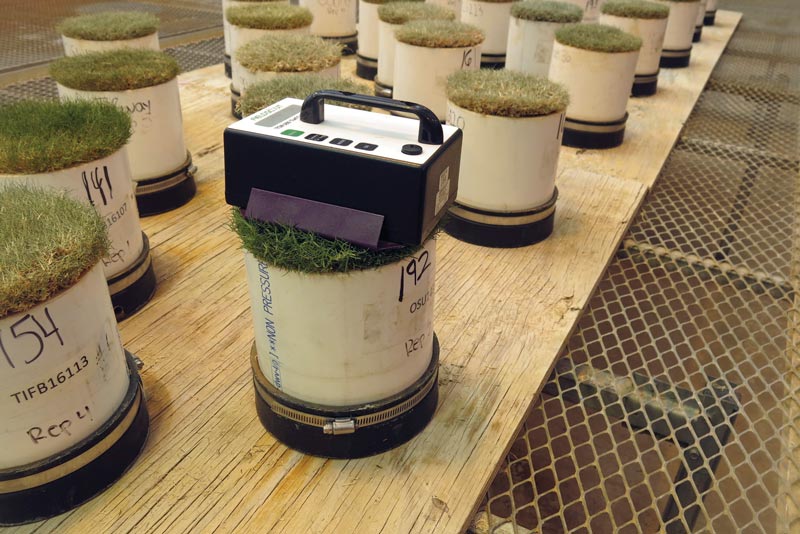
Photo by Lakshmy Gopinath
In the past, bermudagrass cultivars being screened for drought resistance were planted in areas where the root profile was not restricted. Those cultivars were drought-resistant by virtue of their extensive root system (drought avoidance). In some bermudagrass cultivars, however, drought resistance is the result of biochemical solutes that accumulate in their leaves (drought tolerance).
We tested 10 bermudagrass cultivars — four commercially available bermudagrasses (Latitude 36, Tifway, TifTuf and Celebration) and six experimental bermudagrass genotypes — to determine how these respond to drought stress.
All the cultivars were grown in a rainout shelter in the field and in 6.7-inch (17-centimeter) pots in a greenhouse under drought conditions. The cultivars in the greenhouse did not survive more than 15 days, but all the cultivars in the rainout shelter survived 60 days in 2017 and 49 days in 2018 without browning out.
Three experimental genotypes developed by the University of Georgia (TifB161107, TifB16113 and TifB16120) demonstrated superior drought resistance in both study years in the field. However, these same genotypes exhibited lower drought performance when grown in shallow 17-centimeter pots.
This trend indicates that deep rooting would have been the major drought-resistance mechanism in these genotypes in the field. Urban landscapes often encounter rooting restriction that’s due to the building process compacting soil. Genotypes capable of producing deep roots when grown in unrestricted soil depth could lower the need for supplemental irrigation and conserve water resources. Identifying genotypes with better drought tolerance would also help these cultivars survive short-term stress in restricted soil depth. Breeding efforts will be enhanced when cultivars with superior drought avoidance and tolerance are identified.
— Lakshmy Gopinath, Ph.D.; Justin Quetone Moss, Ph.D.; and Yanqi Wu, Ph.D., Oklahoma State University, Stillwater, Okla.
Editor’s note: An earlier version of this summary was published in the 2019 ASA-CSSA-SSSA Meeting Abstracts, ASA-CSSA-SSSA, Madison, Wis.
Teresa Carson is GCM’s science editor.